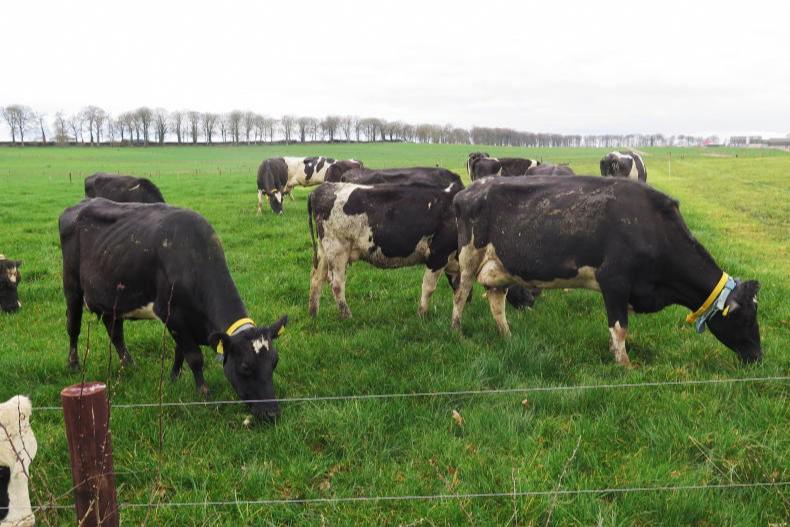Talking to good grassland farmers over recent weeks, the common narrative has been that grass covers took a bit of a hammering after the snow and frost.
Many farmers felt that they had more grass a month ago than they have now. While this is highly possible, my suspicion is that there is more grass out on farms than people think.
A lot of grass is gone yellow and looks like it has died away. However, previous research would have suggested that this type of grass is still very good quality.
The effect of the snow and then frost has been to do a kind of a “freeze dry” effect on grass and while it might be yellow, it’s still high-quality feed.
The cows are the ultimate test and anyone with cows out grazing will tell you that they are getting longer out of sections, or are leaving more grass behind than expected.
It could be that farmers are allocating too much grass to begin with, but what is more likely in my view is that there is more grass in the area allocated than one would think by looking at it.
Even if cutting and weighing, on dry days and with some yellow material in the sward I would expect dry matters to be up and around 20% dry matter.
This will be deceiving on the eye because what looks like a small amount of grass will actually be a lot of grass.
Ground conditions are superb in most places that normally get cows out early anyway. However, wet land is still wet and so farmers in these locations will need to wait.
However, the best advice is to walk paddocks and assess for yourself the best location for cows to go to. If possible, cows should be out day and night and be fed as little silage as possible.
Talking to good grassland farmers over recent weeks, the common narrative has been that grass covers took a bit of a hammering after the snow and frost.
Many farmers felt that they had more grass a month ago than they have now. While this is highly possible, my suspicion is that there is more grass out on farms than people think.
A lot of grass is gone yellow and looks like it has died away. However, previous research would have suggested that this type of grass is still very good quality.
The effect of the snow and then frost has been to do a kind of a “freeze dry” effect on grass and while it might be yellow, it’s still high-quality feed.
The cows are the ultimate test and anyone with cows out grazing will tell you that they are getting longer out of sections, or are leaving more grass behind than expected.
It could be that farmers are allocating too much grass to begin with, but what is more likely in my view is that there is more grass in the area allocated than one would think by looking at it.
Even if cutting and weighing, on dry days and with some yellow material in the sward I would expect dry matters to be up and around 20% dry matter.
This will be deceiving on the eye because what looks like a small amount of grass will actually be a lot of grass.
Ground conditions are superb in most places that normally get cows out early anyway. However, wet land is still wet and so farmers in these locations will need to wait.
However, the best advice is to walk paddocks and assess for yourself the best location for cows to go to. If possible, cows should be out day and night and be fed as little silage as possible.






 This is a subscriber-only article
This is a subscriber-only article










SHARING OPTIONS: